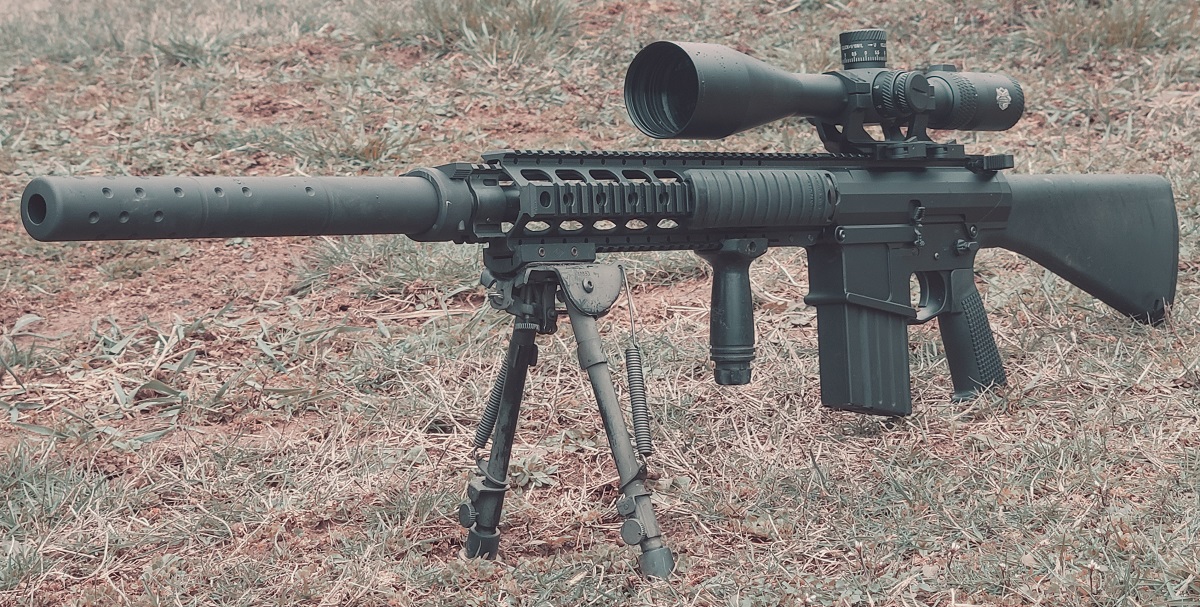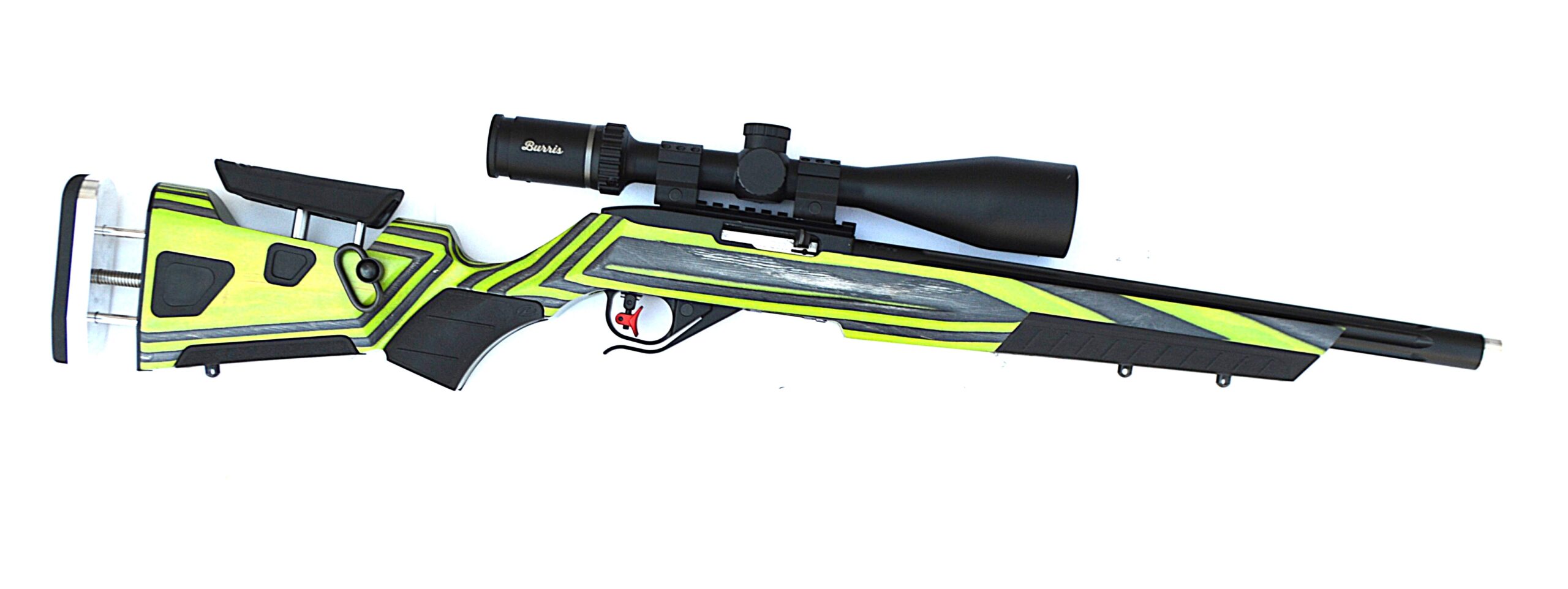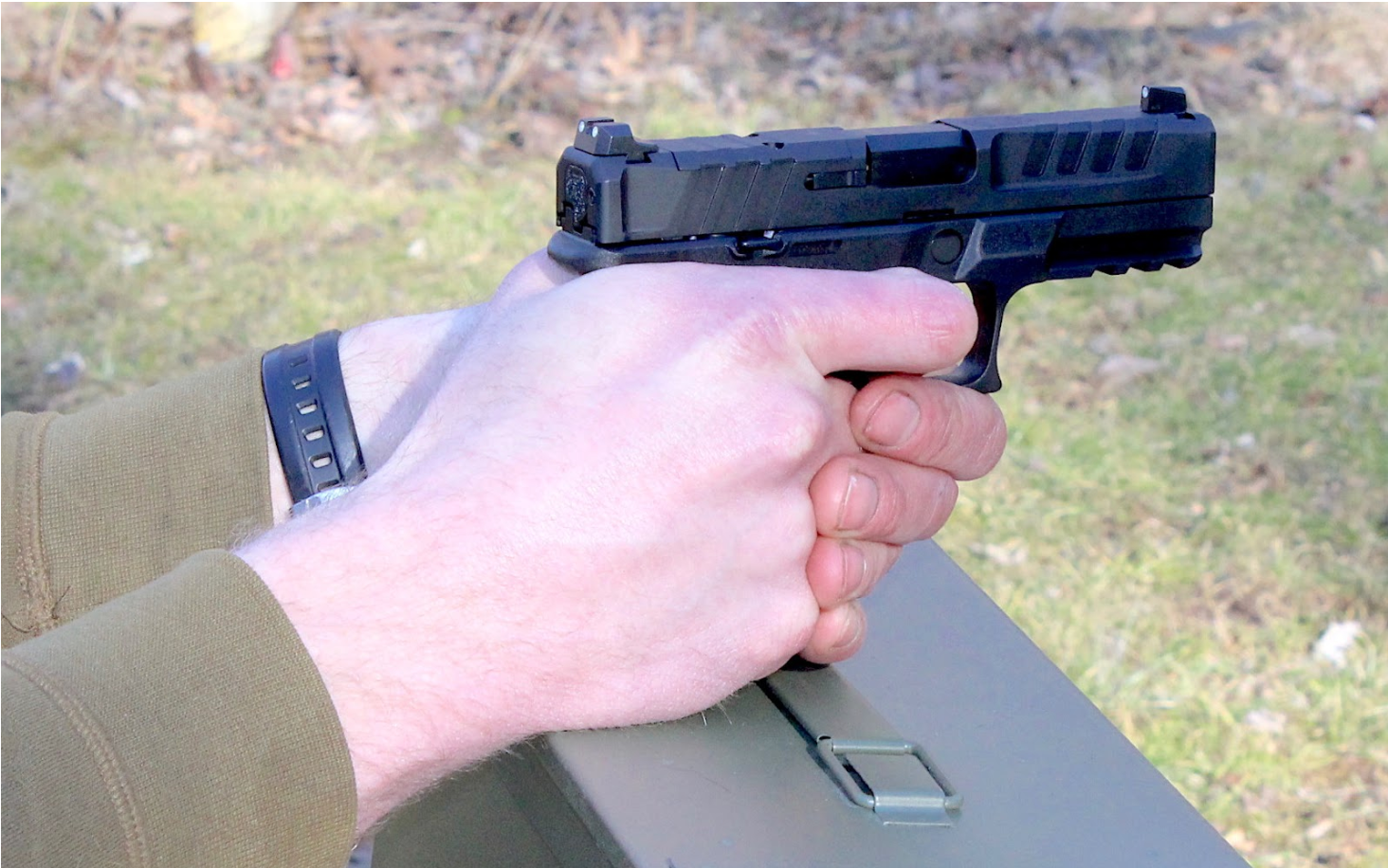I hate starting out a review with an apology, but it’s necessary. Jason Evans, CEO of the Blaser Group, spent his valuable time on an interview with me at the Dallas Safari Club in January of 2023, and I lost (well, deleted) the video. Obviously, it was an accident, but I feel terrible about it. Jason, sorry about that!
Fortunately, the rifle we discussed at DSC – the Mauser 18 Savanna – didn’t go missing. Blaser owns both Mauser and J.P. Sauer & Sohn and the M18 turned out to be as good when put through its paces at the range as Jason claimed it would be. Let’s start out with a description of the bits and bobs and then we’ll move on to how it actually performed.
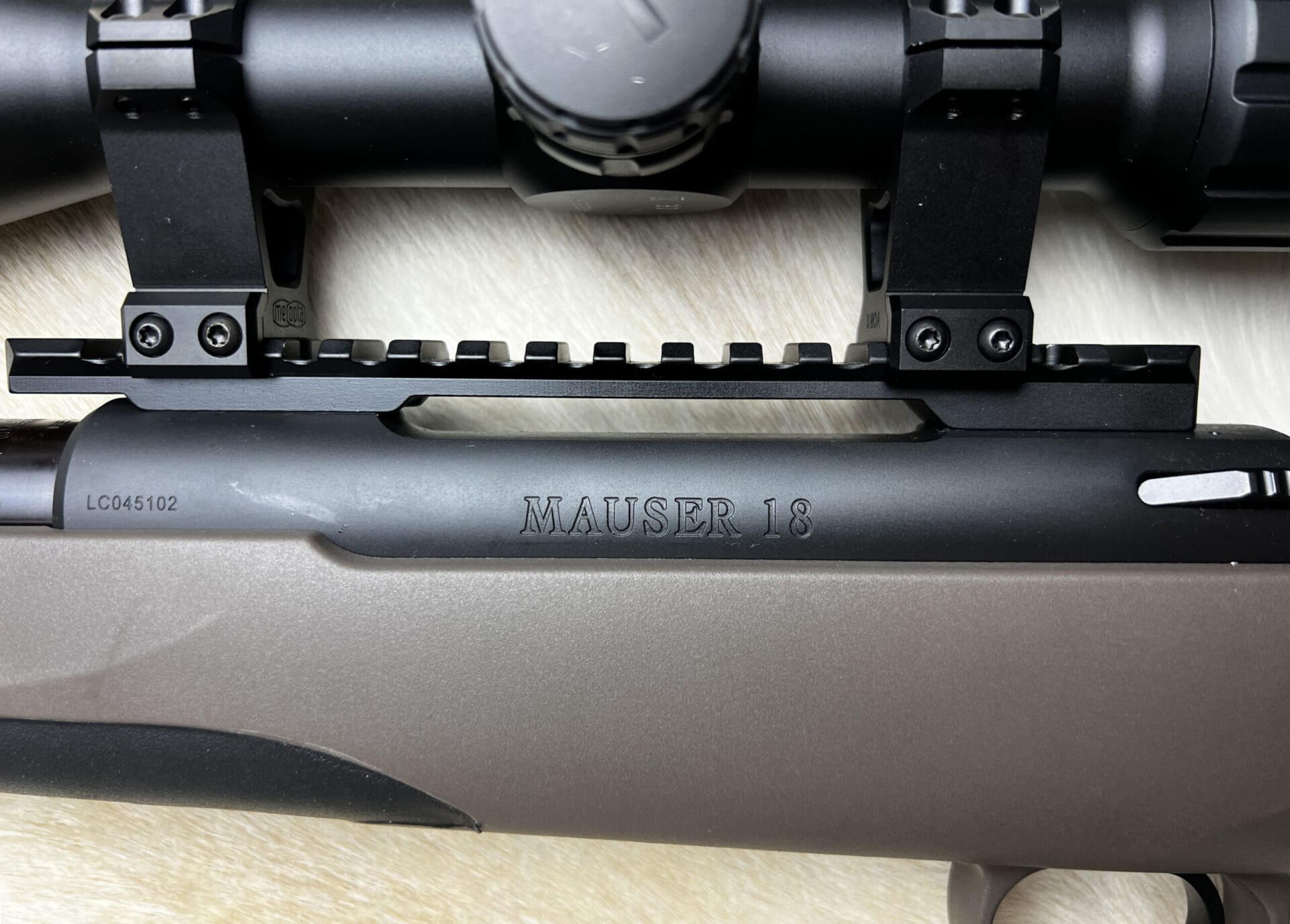
The Mauser 18 has a one-piece synthetic stock and weighs in (without riflescope or mounts) right at seven pounds. That’s something I could carry all day long (and have), up and down hills in search of game. I just did that in southeastern Oklahoma with a rifle weighing more than the M18. I mention that because I’m 65, and no longer a daily runner. Just sayin’. The M18’s weight makes it very functional for hunting.
The Mauser 18 Savanna comes in so-called mini (.222 Remington, .223 Remington), medium (.243 Winchester, 6.5 Creedmoor, 6.5×55 Swedish, .270 Winchester, .308 Winchester, 30-06 Springfield, 8×57 IS [also known as 7.92x57mm Mauser, 8mm Mauser, 8x57mm, and more] and 9.3×62) and magnum (7mm Remington Magnum and .300 Winchester Magnum) calibers.
The standard length-of-pull is 14 inches with its one-inch rubber butt pad. Barrel and overall length of Mini and Medium caliber rifles are 22 and 41.7 inches, respectively. For magnum caliber rifles those lengths are 24.4 and 44 inches.

As you’d expect, the light weight synthetic stock comes equipped with sling attachments fore and aft. Unlike other rifles, the M18 also comes with an easily removable butt pad allowing storage of small cleaning supplies or other gear.

The pad is removed by pressure on the buttons on either side of the stock near the butt. It’s the perfect place to stash a BoreSnake or silicone cloth.

The barrel on the Mauser 18 Savanna is, and I quote, ‘made from high-quality, heat-treated steel.” It’s cold hammer-forged barrel is threaded 9/16×24 for a muzzle brake or suppressor.

I love shooting history, and I asked for ‘Jack O’Connor’s caliber’; a Savannah Model in .270 Winchester arrived at my local gun shop – Shooters Den in Watkinsville, Georgia. I had the owner of Shooters Den, Tom McElwayne, mount a riflescope provided by another friend, Shannon Jackson, and her contacts at Meopta. They sent a MeoSport R 3-15×50 Riflescope which Tom mounted onto the rail provided by the Blaser folks. I wrote a separate REVIEW of this new model of Meopta riflescope, so I’ll just say that it was excellent in clarity and function, as indicated by the accuracy results with the M18.

Fit and finish are good for a rifle at this price point.
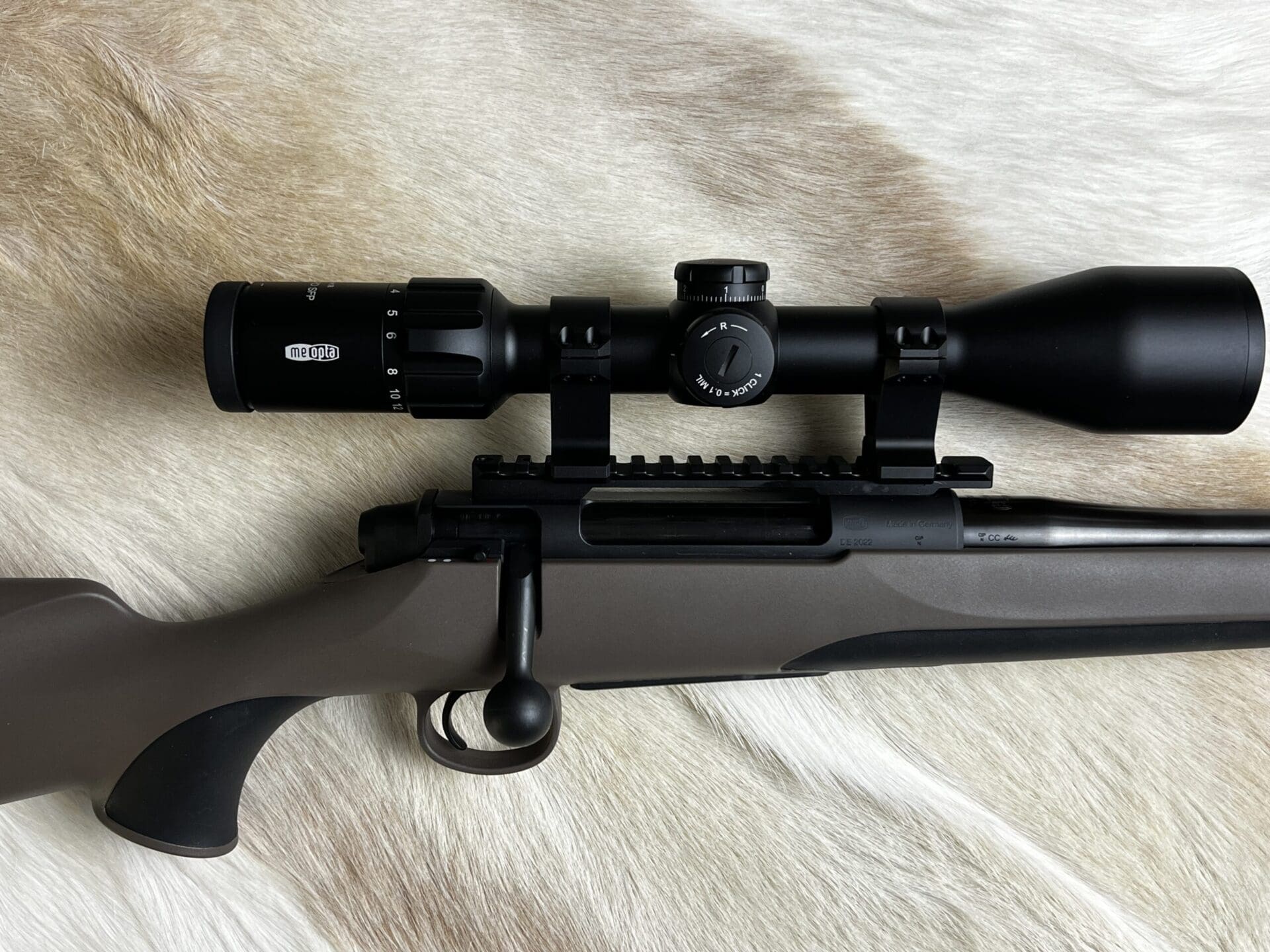
The smooth 60° bolt throw keeps the knob out of the way of your scope’s throw lever, if it has one.

The medium and magnum polymer magazines hold five and four cartridges, respectively. The magazine release, just forward of the mag well, is intuitive and easily accessible.


The single-stage trigger is adjustable in the two to three pound range. Adjustment is straightforward using an included Allen wrench. The break is clean and crisp.

The M18 has a three-position safety. With the safety catch at the rearmost white dot position, the bolt is locked and can’t be moved. That can be handy in the field when you want to ensure things stay where they are when you’re moving through brush. Sliding the catch forward to the second white dot position keeps the safety engaged, but unlocks the bolt. Move the catch all the way to the red forward-most position and the rifle is ready to fire.

Range Analysis
Now we get to the fun part. I’m a research scientist and data are what I depend on, so let’s look at the results.
I tested the M18 with Hornady’s American Whitetail and Superformance ammunition, both with 130-grain bullets. The former has lead-tipped Interlocks and the latter is loaded with polymer-tipped SSTs.

Unusual in my experience, the readings from my LabRadar chronograph unit found slightly lower muzzle velocities than listed on the boxes for both rounds. Normally I find Hornady ammo to match or exceed the ratings.
In this case, the Superformance is listed as 3200 fps at the muzzle, with the four shots I logged having a mean of 3028 fps (standard deviation = 5.8 fps). The American Whitetail box lists these rounds as 3060 fps muzzle velocity, and again my LabRadar found a mean of 2877 (standard deviation = 37.3 fps). Regardless, the bullets are skipping downrange at a fast enough clip to keep them accurate with a flat trajectory.
Superformance = 1.5” high at 100 yards and then 0”, 6” and ~17” low at 200, 300 and 400 yards, respectively. The American Whitetail ammunition, also sighted in at 1.5” high at 100, provided the following trajectories at 200, 300 and 400 yards – 0”, 6” and ~19”. Out to any reasonable range in the hunting field, bullet drop for either ammunition type should remain a non-issue.
As usual, I started the analysis from the bench and then moved to my old companion from many hunts and safaris, 4StableSticks’ Ultimate Carbon rest. The fact that the rest stabilizes both forearm and butt of the rifle means no horizontal wobble, leaving the shooter to only control the vertical hold.

The most accurate combination turned out to be the M18 and American Whitetail cartridges. The graph shown presents the data from firing groups at 100 to 400 yards (bench) and 100 to 300 yards (field rest).
As you can see from the results below, every group shot, both from the bench and field rest, produced sub-MOA results.

Back to conclusions drawn from the range data. I was somewhat inconsistent in my shooting. This likely resulted from mounting the riflescope high because of the rail installed on the rifle. But, again, all groups were sub-MOA all the way out to 400 yards, with the majority 0.5xMOA or less. Mauser guarantees the M18 to be sub-MOA and the rifle certainly lives up to that. Simply put, this rifle/cartridge accuracy performed superbly.
Conclusion
If you’re looking for an affordable, accurate hunting rifle, the M18 fits the bill. It’s light enough for carrying in the mountains, yet heavy enough for the stability necessary for accurate shooting off a standing field rest.
Given the appropriate chambering, I’d take the M18 into the Idaho mountains after elk, crawling through Wyoming scrub after pronghorn, or on a plains game safari in the African bush. It’s a good basic hunting rifle that shoots more accurately than you’d expect at this price point.
Specifications: Mauser 18 Savanna Rifle
Caliber: .270 Winchester
Action: Bolt
Magazine Capacity: Five round in mini and medium calibers, four in magnum
Overall Length: Mini & medium calibers = 41.7 in., magnum caliber = 44 in.
Barrel: Cold hammer-forged German steel, matte finish, threaded for 9/16×24
Barrel Length: Mini and medium = 22 inches, magnum = 24.4 inches
Weight: 7 lbs. (without riflescope)
Stock: Synthetic stock with rubber inserts
MSRP: $849.99 (found online under $700)
Ratings (out of five stars):
Style and appearance * * * *
The Mauser M18 rifle looks just like what it is – functional. The lines are clean, the two-tone synthetic stock is appealing enough, and the metalwork is inset nicely. Sorry guys, but I still prefer a wood-stocked firearm.
Ergonomics * * * * *
This M18 Savanna is easy to handle at the range and, from experience, I know carrying 7+ pounds in the field is very doable. However, the rifle is heavy enough to keep recoil manageable. It’s a good compromise between ultralight and a rifle that’s too heavy for extended field use.
Reliability * * * * *
It’s a bolt action rifle. It smoothly and reliably fed all cartridges from its polymer magazine. There were no mis-feeding or extraction problems at all.
Accuracy * * * * *
The accuracy obtained at 100 to 400 yards, from the bench as well as a standing field rest was excellent. All groups were sub-MOA, with over half sub-0.5 MOA. For an out-of-the-box very affordable rifle, that’s exceptional.
Overall * * * *
The synthetic stock, which isn’t bedded, won’t impress anyone, but it’s attractive enough and functional. More importantly, the M18 is very, very accurate. That stock keeps the M18’s weight down in the range to make it easy to carry in the field. It has enough features and performs well enough — especially at its sub-$700 price point — to make it an attractive hunting rifle option.


